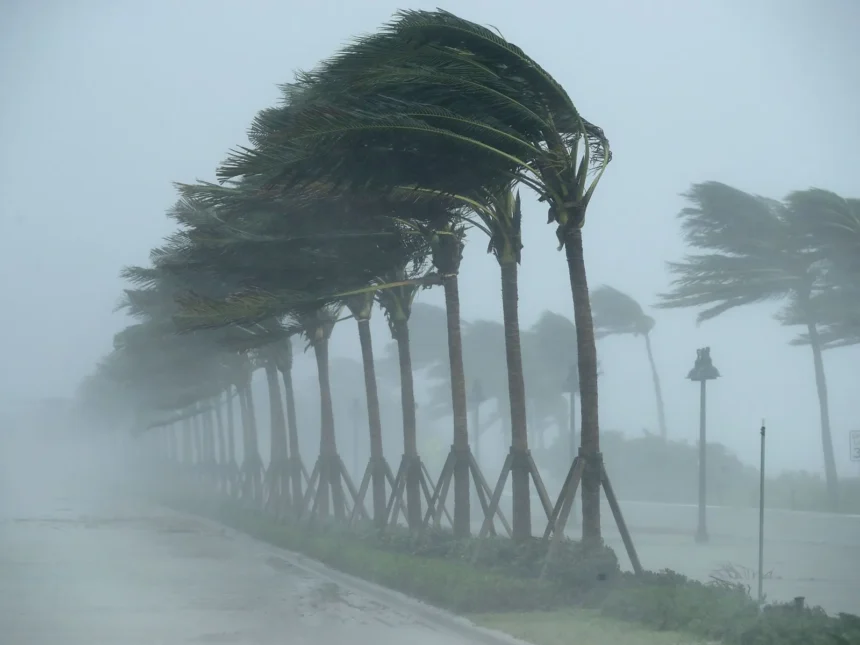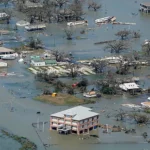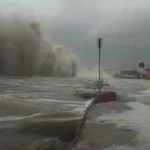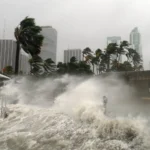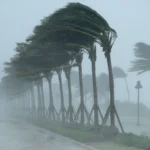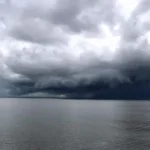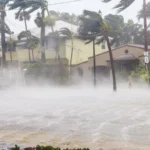Hurricanes are classified into different categories based on their wind speeds and the potential damage they can cause. As Florida is often in the path of these storms, it’s crucial to stay informed about the current hurricane category to assess the risks and take appropriate safety measures. In this article, we will explain in detail what the different hurricane categories are, how they are measured, and how to track the current hurricane impacting Florida.
1. Understanding the Saffir-Simpson Hurricane Wind Scale
a. Overview of the Saffir-Simpson Scale
The Saffir-Simpson Hurricane Wind Scale is the standard tool used to classify hurricanes. This scale categorizes hurricanes from Category 1 to Category 5 based on sustained wind speeds. Each category represents the potential damage that could occur, with Category 5 being the most severe.
b. Category 1 Hurricanes
A Category 1 hurricane has sustained wind speeds between 74 and 95 mph. Though considered the least intense hurricane category, it can still cause significant damage, especially to unprotected structures, trees, and power lines. Coastal flooding and minor storm surges are also common effects of Category 1 hurricanes. If a Category 1 hurricane is impacting Florida, residents can expect localized power outages and some property damage, particularly in coastal areas.
c. Category 2 Hurricanes
When wind speeds reach between 96 and 110 mph, a hurricane is classified as a Category 2. These storms are more dangerous and can cause more extensive damage to homes, trees, and other structures. Roofs, windows, and doors may be damaged, and widespread power outages are likely. Storm surges along the coast can lead to significant flooding, and people in low-lying areas may need to evacuate.
d. Category 3 Hurricanes
Category 3 hurricanes are the first in the “major hurricane” category, with wind speeds ranging from 111 to 129 mph. These storms cause severe damage, with a high risk of structural damage to homes and buildings. Trees are often uprooted, and roads may become impassable. Storm surges can lead to devastating coastal flooding, and long-term power outages are likely.
e. Category 4 Hurricanes
A Category 4 hurricane has sustained wind speeds between 130 and 156 mph. These storms are extremely dangerous and can cause catastrophic damage. Most homes will sustain roof and wall damage, while trees and power poles will be knocked down, leaving areas isolated for days or even weeks. Flooding will be widespread, especially in coastal regions. Evacuation is often necessary for those in the direct path of the storm.
f. Category 5 Hurricanes
The most severe classification is Category 5, with wind speeds exceeding 157 mph. A Category 5 hurricane causes catastrophic destruction, with complete roof failure and collapse of many buildings. Entire neighborhoods can be rendered uninhabitable for weeks or months, and storm surges can reach 20 feet or higher, causing extensive inland flooding. Hurricanes of this magnitude are rare, but when they occur, they result in mass evacuations and widespread devastation.
- What Are the Best Ways to Track the Current Hurricane in Florida?
- What Is the Projected Path of the Latest Hurricane in Florida?
- Which regions in Florida are at the highest risk for hurricanes this year?
- How Is Florida Getting Ready for the 2024 Hurricane Season?
2. How to Track the Current Hurricane Category in Florida
a. National Hurricane Center (NHC) Updates
The National Hurricane Center (NHC) is the most reliable source for tracking the current hurricane category impacting Florida. The NHC continuously monitors storm systems and provides real-time updates on hurricane categories, wind speeds, and potential damage.
NHC advisories include detailed information about a storm’s current wind speeds, projected path, and possible changes in intensity. By visiting the NHC’s website, you can easily track whether a hurricane impacting Florida has strengthened or weakened, and which areas are most at risk.
b. Local News and Meteorological Reports
Local news stations across Florida, such as WPLG Local 10 and WTVJ NBC 6, provide live hurricane coverage. They receive updates from the NHC and local meteorologists, offering real-time information on hurricane categories, evacuation orders, and expected impacts. These reports help you stay informed about the specific category of the hurricane currently affecting your area in Florida.
c. Hurricane Tracking Apps
Apps like My Hurricane Tracker and the American Red Cross Hurricane App are excellent tools for keeping up with the current hurricane category in Florida. These apps provide push notifications and real-time data about any storm activity. With these tools, users can monitor the storm’s development and quickly see if the hurricane has changed categories.
3. What to Expect Based on the Hurricane Category
a. Category 1 and 2 Hurricanes: Moderate to Severe Damage
While Category 1 and 2 hurricanes may not seem as alarming as the higher categories, they still pose significant risks. Residents in areas affected by these hurricanes can expect property damage, particularly to roofs, windows, and trees. In addition, moderate flooding and power outages lasting several days are common. People living in mobile homes or near the coast should consider evacuating.
b. Category 3 and 4 Hurricanes: Major Destruction
Category 3 and 4 hurricanes cause major destruction. Roofs, walls, and even some well-constructed homes may suffer extensive damage. In addition to strong winds, storm surges can flood coastal communities, making evacuation essential. These hurricanes typically leave large areas without power or water for extended periods. If you’re in the direct path of a Category 3 or 4 hurricane in Florida, authorities will likely issue mandatory evacuation orders.
c. Category 5 Hurricanes: Catastrophic Devastation
When a Category 5 hurricane is forecasted, it is critical to take every precaution. These hurricanes cause widespread devastation, with entire neighborhoods being wiped out. Flooding can reach far inland, and rebuilding efforts may take months or years. Evacuations are mandatory, and it is essential to have a plan in place for both during and after the storm.
4. Preparing for the Impact of Different Hurricane Categories
a. Emergency Kits and Supplies
No matter the hurricane category, it’s vital to prepare an emergency kit. Your kit should include non-perishable food, water, flashlights, batteries, a first aid kit, and any necessary medications. For Category 3 and higher storms, having additional supplies such as tarps, wood planks, and sandbags can help mitigate property damage.
b. Evacuation Plans
In the event of a major hurricane, evacuations are often necessary. If a Category 3 or higher hurricane is forecasted to impact Florida, it’s crucial to know your local evacuation routes and shelters. Keep your gas tank full, and have an evacuation plan in place that includes a safe destination and a communication plan with family members.
c. Home Preparations
Securing your home ahead of a hurricane is crucial, especially for Category 3 and higher storms. This includes boarding up windows, securing doors, and removing any outdoor furniture that could become airborne in strong winds. For residents near the coast, installing storm shutters and reinforcing roofs may be necessary to minimize damage.
Conclusion
Understanding the current hurricane category impacting Florida is critical for making informed decisions about safety and preparedness. The Saffir-Simpson Scale provides valuable insights into the potential risks and damage associated with each hurricane category. By staying informed through official channels like the National Hurricane Center, local news, and hurricane tracking apps, residents of Florida can take timely action to protect their homes, families, and businesses.

